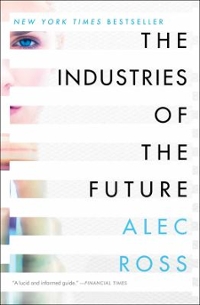Macroeconomics 2201...
*HELP SOLVE THE BELOW QUESTIONS. ORIGINAL WORK REQUIRED PLEASE.
Suppose you are given the following information about the economy (all figures measured in real dollars): Consumption C =300 + 0.8YD Disposable income YD = Y - T Net taxes T = 200 Planned investment I = 500 Government spending G = 500 Net exports NX = -200 a. What is the value of the marginal propensity to consume? b. Derive the aggregate expenditure function (AE = C + 1 + G + NX). Hint: rewrite the consumption function so that it is a function of Y and not YD. c. Calculate equilibrium output (Y) and identify equilibrium output graphically. d. Suppose government spending increased from 500 to 550? Find the new equilibrium level of output. Illustrate this change graphically. e. What is the value of the spending multiplier?\fProblem Consider a model where money enters the utility function because of the transaction services it provides to households. The economy is populated by a continuum of identical infinitely-lived households. The representative households wants to maximize his lifetime utility: U = E. > gu ( C+, It, P. M+ 1=0 where 6 6 (0, 1) is the discount factor, C, is consumption, L, is labor, Me is nominal holdings of money (cash), and Pe is the price level in the economy. Foor simplicity, assume utility takes the following form: Ll+x 2 (Ct , Lt ; P. = In C+ + yln p. where y > 0, x >0,7>0 1+ x Notice that y indexes the importance of real money holdings for transactions, while y indexes the disutility from working. Utility is then increasing in consumption C, and real cash-, but decreasing in labor Ly. The household's budget constraint in every period t is: P.C+ + M+ + B+ = R+-1B+-1 + Me-1+ W.L+ + It where B, is a government bond which delivers a riskless gross return R, (hence Rt-1B,-1 are payments in t from a bond purchased in t - 1, including both the principal and the interests). The term It stands for transfers received by the central bank. As in class, we are going to denote gross inflation in period t as The firm's problem is the following. It chooses labor L, to maximize profits At = PYt - WL, subject to It = A.Ly, where a e (0, 1) under flexible prices and perfect competition. Answer to the followings.4. Find the equilibrium expressions for output It, consumption C+, labor L, and the real wage We = p They should be (non-linear) functions only of At- 5. After linearizing the model around its steady state, you can find the following expressions for the (lin- earized) Euler equation and money demand: Of = E.C+1 - (R+ - Exit+1 ) (1) mi = noct -nRR+ (2) where no, 78 > 0 (they are composite coefficients depending on model parameters), and, as in class, a "hat" denotes the percentage deviation of the variable from its steady state. Ex: C, = In . Fromnow on, let's suppose that At = 1 at all times, so that there is no more uncertainty in the model. This implies that you can drop the expectation operator from the Euler equation 1. Consider two alternative monetary policies: - the central bank controls nominal money growth: M. = AM_,, for & 2 1 (Money Growth Rule, MGR) - the central bank directly controls the interest rate R (Interest Rate Rule, IRR) Under the MGR, as seen in class, we have that my = mi_, -it Under the IRR, assume that Re = 4, it, where with the coefficient ( >1. Answer to the followings. a) Suppose the central banks adopts the MGR. Find the equilibrium inflation rate n, of the model. HINT: this is basically what we have done in class. First you have to solve for the equilibrium value of my, then recall that me = In , and then use the definition of my= . b) Now, suppose the central banks sets the interest rate R (entering the Euler equation (1)) according to Re =_*+. In this case, we assume that the steady state inflation is a > 1. You can think of this also as a choice of the central bank (that is what the Fed actually does). Find the equilibrium inflation rate x, and the equilibrium growth rate of nominal money, namely M.-1 M. HINT: as for a), you will have to solve a difference equation. However, this time the difference equation will be in terms of a, not m. You have to find the unique stable solution of such difference equation











